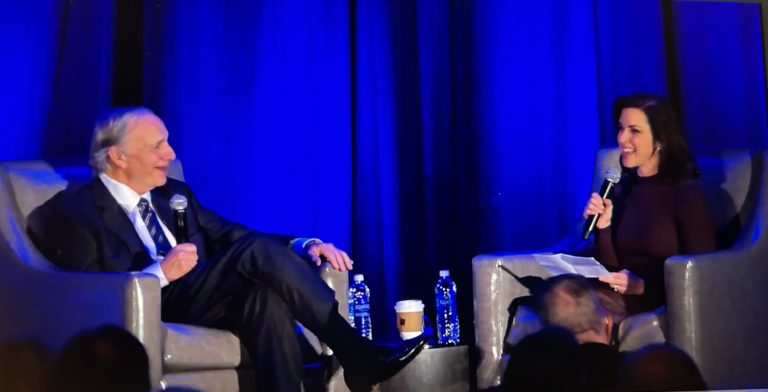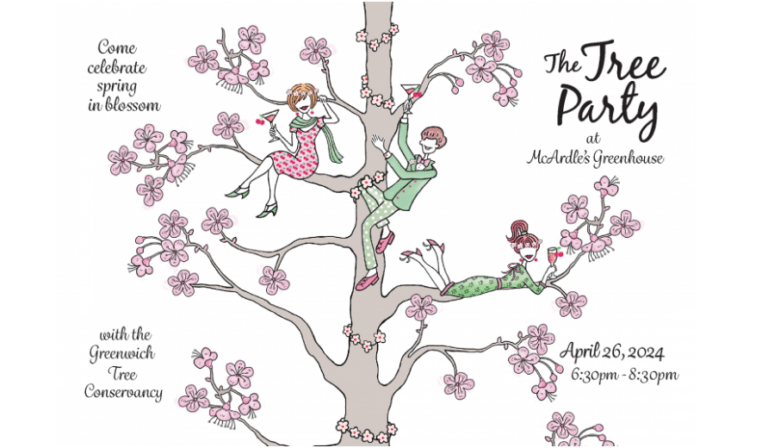By Av Rivel
The Partnership: George Marshall, Henry Stimson, and the Extraordinary Collaboration that Won World War II
At the meeting of the Retired Men’s Association (RMA) of Greenwich on Wednesday, June 1, Hollister Sturges introduced the speaker of the day, Edward “Ted” Aldrich. Ted Aldrich was born and raised in Rowayton, CT, attended Colgate University, majoring in economics and political science, and then earned an MBA in finance from Boston College. He has had a distinguished career in banking beginning at UBS with posts in New York, Zurich, and London, specializing principally in commodities. He has held senior positions at Deutsche Bank, Fortis, and Mizuho Bank, and currently works as the head of corporate development for Auramet Trading, one of the world’s largest physical precious metals merchants.
As a serious amateur historian Aldrich’s interests centered on World War II. In his first book The Partnership: George Marshall, Henry Stimson, and the Extraordinary Collaboration that Won World War II, he looks at the partnership of a consummate general, George C. Marshall, and the wartime secretary of war, Henry Stimson. In one of the most consequential collaborations of the twentieth century, Marshall and Stimson led the American military effort during World War II, in roles that blended business, politics, diplomacy, and bureaucracy in addition to warfighting. With a dazzling synergy, they transformed an outdated, poorly equipped army into a well-equipped modern fighting force of millions.
The story of how this odd couple “won the war” centers not on the battlefields, but on what we call today the supply chain.
On December 7, 1941 the U.S. military was not prepared to fight a major war. It had major shortages in personnel, i.e., soldiers, sailors, airmen and officers of all types. There were not enough tanks, planes, artillery pieces, ammo or even the barracks necessary to house the army that would be required. Stimson and Marshall were instrumental in building and equipping the greatest fighting force in the world.
In addition to physical shortages, the mood in United States was mostly isolationist. It had no stomach for a large military and a general fear of a powerful industrial machine.
Aldrich spent some time talking about how Marshall and Stimson rose to their positions of power in the war effort, even before there was a war effort (prior to December 7, 1941). He talked about the other significant generals in the U.S. military, Eisenhower, Patton, Bradley, Clark and MacArthur, and how Marshall rose to the top as a staff general while the rest fought the fight and gained the glory.
Our speaker talked about the synergy that existed between the general and the Republican statesman who was a major advisor to Democratic President Franklin Roosevelt. The following gives an idea of the accomplishments of these two titans.
– Prior to December 1941 there were about two million personnel in the military. However, 16,100,000 Americans ultimately fought in the war, and 3,500,000 civilian employees of the government supported them on the home front.
– To feed the war machine American industry produced 100,000 tanks and 300,000 aircraft of all types between 1942 and 1945.
A spirited RMA Q&A followed the prepared talk.
For those interested in seeing the full presentation, go to the RMA website and click on the video at https://vimeo.com/user9053619/videos.
The RMA’s next presentation, Zoonotic Diseases: What We Need to Know to Keep Ourselves and Our Animals Safe, will occur on June 15 at 11:00 a.m. at the First Presbyterian Church in Greenwich as well as on webinar at: https://bit.ly/30lBj21. The 21st century has brought unprecedented change to our planet—and with it—emerging diseases transmitted from animals to people. Little known until recently—West Nile, Zika, Corona viruses and Monkeypox join the list of growing diseases bringing the fight to humankind. Join Zoologist and curator, Jim Knox who will explore for all attendees the connection between animal zoonotic diseases and humans. Learn what we can expect – and most importantly -what we can do to protect ourselves and our animals from the dangers.
Jim Knox serves as the curator of education for Connecticut’s Beardsley Zoo in Bridgeport where he directs educational programming and conducts field conservation for this AZA-accredited institution. Jim is a graduate of Cornell University where he studied animal science and applied economics. He has conducted field research on Alaskan grizzly bears, field conservation for Atlantic salmon and written for the U.S. Fish and Wildlife Service and for Natural History magazine. A member of The Explorers Club, Jim has served as an on-camera wildlife expert for The Today Show, as well as The CBS Early Show, and has lectured for The Yale School of The Environment and The Harvard College Conservation Society. Jim has been featured in The New York Times, served as a TEDx Presenter and as a guest host for Connoisseur Media’s Star 99.9 FM Anna & Raven Show. Jim writes a column, “Wildly Successful,” for the Greenwich Sentinel and is proud to serve as a science advisor to The Bruce Museum.
RMA speaker presentations are presented as a community service at no cost to in-person or Zoom attendees. The RMA does request that all eligible individuals consider becoming a member of our great organization, and thereby enjoy all the available fellowship, volunteer and community service opportunities that the RMA offers to its members. For further information, visit www.greenwichrma.org or contact Joe Mancinelli (mailto:jlmanc@optonline.net) or Peter Stern (mailto:members@greenwichrma.org).




